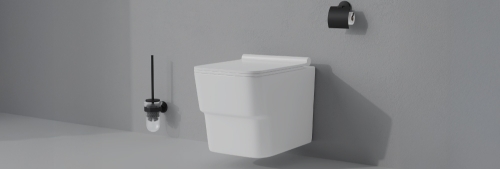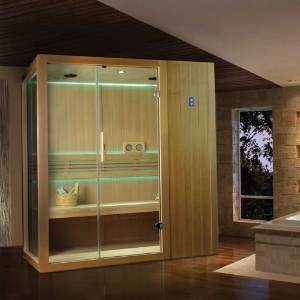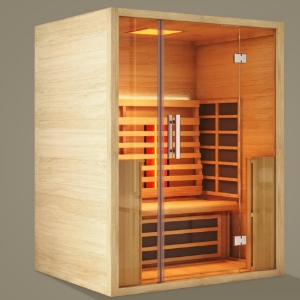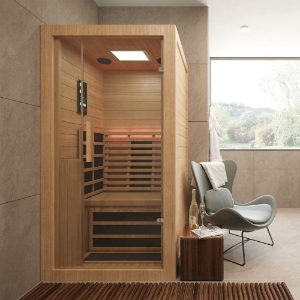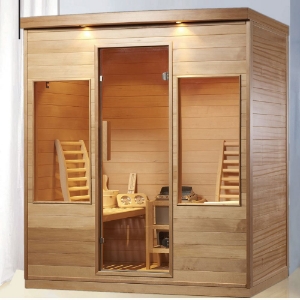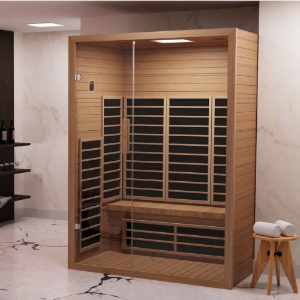A sauna bath has been cherished for centuries as a natural way to heal, relax, and rejuvenate the body. Originating in Finland, saunas were once simple wooden cabins designed to generate intense heat that encouraged sweating and detoxification. Today, they have evolved into modern wellness essentials found in homes, gyms, and spas worldwide. With their growing popularity, saunas are no longer seen as a luxury but as a practical investment in health and relaxation.
When you sit inside a sauna, the body warms up, circulation improves, and the skin releases toxins through sweat. This natural process promotes clearer skin, relieves sore muscles, reduces stress, and strengthens overall immunity. Whether you choose a traditional dry sauna, a modern infrared model, or a hybrid design, each type offers unique benefits suited to different preferences and lifestyles.
However, choosing the right sauna requires more than just knowing the types. Size, features, installation requirements, and long-term maintenance all play a vital role in making the right decision. From compact one-person cabins to spacious family setups, the variety of choices can feel overwhelming without proper guidance.
This comprehensive buying guide will walk you through everything you need to know before investing in a sauna. You’ll discover the different types, learn about their health benefits, compare sizes, understand cost factors, explore installation tips, and even look at the best features and add-ons for a truly personalised experience. With the right knowledge, you can transform any space into a private retreat that elevates both your lifestyle and wellbeing.
Types of Sauna:-
There are different Types of Sauna to choose from. Each one works a little differently:
1. Traditional Sauna (Dry Heat)
A traditional sauna is the oldest and most widely recognised type, with roots tracing back to Finnish culture. Built with wood interiors and equipped with a heater—electric, wood-fired, or gas—it warms the air inside the cabin, creating a hot and dry atmosphere. Temperatures typically range from 80°C to 100°C, making it one of the most intense sauna experiences. Many models feature sauna stones, which can be sprinkled with water to create bursts of steam, adding a touch of humidity while maintaining the high heat. This combination makes traditional saunas an excellent choice for those who enjoy sweating heavily, detoxing the body, and experiencing a time-honoured wellness practice. While they are more energy-intensive than other types, they deliver a truly authentic experience, complete with the soothing scent of natural wood and the therapeutic benefits of intense heat.
Best For
People who enjoy intense heat ranging from 80°C to 100°C
Fitness enthusiasts looking for deep sweating and detox
Individuals who prefer the authentic Finnish sauna experience
Things to Know
Provides very dry heat unless steam is added
Takes longer to heat up compared to infrared saunas
Consumes more electricity than infrared models
Some users may find the high temperature uncomfortable
Maintenance
Requires regular cleaning of wooden benches and walls to avoid sweat stains
Heater stones need replacement every 1–2 years depending on usage
Wood should be treated and maintained to resist cracking or mold
Pros
Authentic sauna feel with wood aroma and steam option
Encourages heavy sweating, aiding detox and circulation
Can accommodate multiple people at once
Cons
High operating costs due to electricity/wood consumption
Not suitable for people sensitive to very high heat
Requires more space and ventilation
Extra Features
Many traditional saunas come with custom wood finishes, LED lights, and sound systems
Some offer automatic steam control for convenience
2. Infrared Sauna
An infrared sauna is a modern twist on the classic sauna experience. Instead of heating the air, it uses infrared light panels that directly warm your body. This method penetrates deeper into muscles and tissues, creating a therapeutic effect without the need for extreme room temperatures. Infrared saunas usually operate between 50°C to 60°C, making them more comfortable for longer sessions, especially for people sensitive to heat. They are particularly valued for health benefits such as muscle recovery, pain relief, improved circulation, and detoxification. Unlike traditional saunas, they don’t produce steam or the same rustic atmosphere, but they are energy-efficient and quick to heat up. Their compact size also makes them more suitable for homes with limited space. With features like chromotherapy lights, music systems, and even portable designs, infrared saunas offer a relaxing, wellness-focused alternative that fits seamlessly into modern lifestyles.
Best For
People sensitive to extreme heat but still want sauna benefits
Those with joint pain, arthritis, or chronic fatigue
Fitness recovery, as deep penetration eases muscle soreness
Things to Know
Operates at a lower temperature (50°C–60°C), yet still induces heavy sweating
Lacks the traditional steam feel, which some people miss
Typically uses less electricity than traditional saunas
Maintenance
Easy to maintain as there’s no need for stones or constant cleaning of wood
Panels require little upkeep—just occasional dusting
Wood interior should be wiped down regularly to prevent sweat buildup
Pros
Energy-efficient and heats up quickly
Comfortable for longer sessions since temperatures are milder
Great for detox, weight loss, skin health, and pain relief
Cons
Does not provide the same authentic sauna atmosphere
Smaller cabin sizes—better suited for 1–2 people
Can be more expensive upfront depending on technology
Extra Features
Many models offer Bluetooth speakers, chromotherapy lights, and app controls
Portable infrared saunas are available for small spaces
3. Steam-Integrated or Hybrid Sauna
A hybrid sauna combines the benefits of both traditional dry heat and moist steam, making it one of the most versatile options available. These saunas are designed with dual systems, allowing users to switch between a high-temperature dry session and a steam-infused experience depending on their mood or health needs. Temperatures can be adjusted to mimic either style, giving flexibility to households with different preferences. While more complex in setup and typically more expensive, hybrid saunas create a spa-like atmosphere at home, often enhanced with premium features like glass walls, digital controls, aromatherapy, and LED lighting. They are ideal for people who want both detoxifying dry heat and respiratory benefits of moist steam in a single unit. Though they demand more space, power, and maintenance, they deliver the most complete sauna experience for those willing to invest in comfort and wellness variety.
Best For
Families or couples where different members prefer different sauna styles
Wellness enthusiasts wanting maximum flexibility
People who want to alternate between detox (dry heat) and respiratory relief (steam)
Things to Know
Offers both dry heat and steam options, but requires a more advanced setup
Usually comes at a higher cost due to combined technologies
Installation can be complex and may need professional setup
Maintenance
Needs more frequent cleaning due to steam moisture
Proper ventilation is crucial to prevent mold or mildew
Combination heaters require periodic servicing
Pros
Highly versatile—switch between traditional and steam modes
Provides a complete spa-like experience
Can be customised with luxury features (lighting, glass walls, music systems)
Cons
Higher purchase and installation costs
Requires more space and stronger electrical setup
Maintenance is more demanding than single-type saunas
Extra Features
Smart digital panels to switch between modes easily
Luxury finishes like aromatic steam infusion and remote controls
Larger models often designed for home spas and wellness centres
Choosing the Right Sauna Size
When buying a sauna, one of the most important decisions is choosing the right size. Saunas come in different shapes and capacities, designed to fit everything from small apartments to large homes and even outdoor spaces. The size you select should be based on how many people will use it regularly, the available space in your home, and your budget. While a one-person sauna is perfect for solo relaxation or quick wellness sessions, larger saunas are ideal for families, couples, or people who want a social spa-like experience. Beyond just dimensions, you’ll also need to plan for ceiling height, seating arrangements, heater placement, and proper ventilation. Choosing the right size ensures comfort, efficiency, and long-term usability, while also preventing costly mistakes during installation.
Common Sauna Sizes
1-Person Sauna – Compact, fits in small bathrooms or apartments; perfect for individual use.
2-Person Sauna – Ideal for couples; fits comfortably in spare rooms or small basements.
3–4 Person Sauna – Great for families or social use; requires more space but offers comfort.
Custom/Outdoor Sauna – Can be designed to fit gardens, terraces, or dedicated spa areas.
Things to Plan Before Buying
Height: Most saunas need at least 6.5 feet (2 meters) of ceiling height.
Space for Benches: Ensure room for reclining or sitting comfortably.
Heater & Ventilation: Adequate space for safe heater installation and fresh airflow.
Door Clearance: Doors should open easily without obstruction.
Practical Tip
Mark the planned sauna area on your floor with tape or chalk. This gives a realistic sense of how much space it will occupy and helps avoid overcrowding.
Choosing the right size sauna means balancing comfort, practicality, and lifestyle needs—ensuring you enjoy your wellness sessions for years to come.
Health Benefits of Using a Sauna:-
Regular sauna use offers a wide range of physical and mental health benefits, making it a valuable addition to modern wellness routines. The heat from a sauna triggers natural responses in the body, such as sweating, improved circulation, and muscle relaxation, all of which contribute to overall wellbeing.
1. Heart Health & Circulation
Sitting in a sauna raises your heart rate and dilates blood vessels, improving circulation. Studies suggest that regular sessions may help lower blood pressure and support cardiovascular health.
2. Stress Relief & Better Sleep
The warm, calming environment promotes relaxation and helps reduce cortisol levels (the body’s stress hormone). This not only eases mental tension but can also improve sleep quality.
3. Clearer Skin & Detox
Sweating helps flush out toxins, oils, and impurities from the skin. Over time, this can lead to a clearer complexion and a natural glow.
4. Muscle & Joint Relief
Heat penetrates deep into muscles, soothing stiffness, reducing soreness, and easing joint pain. Infrared saunas are especially effective for people with arthritis or chronic pain, as the gentle heat reaches deeper tissues.
5. Stronger Immunity
Regular sauna use may boost the immune system by stimulating white blood cell production, helping the body fight off colds and infections.
Whether for relaxation, detoxification, or recovery, saunas provide a holistic health boost that supports both body and mind.
Infrared saunas are good for people with pain or joint problems because the heat goes deeper into your body.
Sauna vs Steam Room
Saunas and steam rooms use heat, yet they feel extremely different. Here’s a quick guide:
What It Does | Sauna | Steam Room |
Type of Heat | Dry heat | Wet, steamy heat |
Temp Range | 70°C to 100°C | 40°C to 50°C |
Good For | Sweating and relaxing muscles | Helping with breathing and colds |
Walls | Wood | Tile or glass |
Cleaning | Easy | Needs more cleaning |
Energy Use | Medium to high | High |
Pick a sauna if you like dry heat. Choose a steam room if you want moist air to help your breathing.
Sauna Price Guide:-
What Affects Sauna Cost?
Buying a sauna is an investment in both wellness and lifestyle. The overall cost of a sauna depends on several factors such as type, size, features, and installation requirements. Whether you’re choosing a traditional model, an infrared unit, or a hybrid design, the cost will vary based on materials, technology, and customisation. Understanding these factors can help you plan your budget and ensure you choose a sauna that meets your needs without overspending.
1. Size and Capacity
The larger the sauna, the more materials and components are required. A compact one-person unit is generally more affordable, while family-sized or custom-built saunas naturally cost more. Size also impacts operating expenses, as larger saunas consume more electricity or heating fuel.
2. Type of Sauna
Traditional Saunas tend to use more energy and require sturdy construction materials, often making them more expensive to operate.
Infrared Saunas usually come with advanced heating panels, which can raise the upfront cost but save money in energy efficiency.
Hybrid Saunas combine both systems, offering versatility but also requiring more complex installation and equipment.
Why Prices Vary
Several elements influence the final cost of your sauna:
Wood Type & Quality: High-end woods like cedar or hemlock are durable, aromatic, and resistant to moisture, but they add to the price. Standard woods cost less but may need more upkeep.
Technology & Controls: Saunas with digital panels, smart thermostats, or app-based controls cost more than basic manual setups.
Size & Design Complexity: Larger saunas or custom-built designs with multiple benches, glass panels, or unique layouts increase both material and labour costs.
Features & Add-ons: Extras like chromotherapy (colour lighting), Bluetooth music systems, aromatherapy dispensers, or glass doors can make the experience more luxurious but also raise the price.
Installation & Setup: Prefabricated infrared units are easier for DIY installation, while traditional or hybrid saunas often require professional assembly, proper ventilation, and electrical work.
Long-Term Value
Although the initial investment may feel high, having a sauna at home can be cost-effective in the long run. Regular use saves frequent trips to spas and provides daily health and relaxation benefits from the comfort of your own home.
How to Install a Sauna
Installing a sauna at home can transform your space into a private wellness retreat. However, it requires careful planning to ensure safety, efficiency, and long-term use. From choosing the right location to handling ventilation, flooring, and power supply, every detail matters. Below is a detailed guide on how to approach sauna installation.
Indoor Sauna Installation
Indoor saunas are popular because they can be placed in existing rooms such as bathrooms, basements, attics, or spare bedrooms. When installing indoors:
Choose the Right Room: Pick a location that can handle heat and moisture. Avoid carpeted or poorly ventilated areas.
Airflow & Ventilation: Proper airflow prevents mould growth and keeps the sauna fresh. Install vents to allow circulation.
Electrical Setup: Most saunas require a dedicated power supply. For traditional saunas, this may mean professional electrical wiring, while smaller infrared kits often plug into standard outlets.
Moisture Management: Ensure nearby walls and flooring can resist humidity. Use moisture barriers or waterproof panels where necessary.
Outdoor Sauna Installation
Outdoor saunas are excellent for gardens, terraces, or backyards and offer a natural, spa-like experience. When setting up outdoors:
Foundation: Place the sauna on a level, solid surface such as concrete, pavers, or a treated wooden deck.
Weather Protection: The unit should be weatherproof and designed for outdoor use. A roof or shade structure adds durability.
Location: Choose a private area with easy access to your home for comfort during colder months.
Waterproofing: Outdoor saunas must be sealed against rain, wind, and temperature fluctuations.
Setup Tips for Any Sauna
Regardless of whether you choose an indoor or outdoor sauna, some setup essentials remain the same:
Ventilation: Keeps the air breathable and prevents overheating.
Power Supply: Larger saunas may need special outlets or higher voltage connections. Always confirm with an electrician before installation.
Flooring: Use non-slip, water-resistant flooring such as tile, stone, or treated wood. Avoid carpet or absorbent materials.
Waterproofing: Protect adjacent spaces from steam, condensation, or water spills to prevent damage.
Clearance: Ensure enough room for doors to open fully and for safe access in and out of the sauna.
DIY or Hire a Professional?
DIY Installation: Many infrared sauna kits are prefabricated and designed for easy assembly. Panels slot together, and minimal tools are needed. These can often be installed in a few hours.
Professional Installation: Traditional and hybrid saunas usually require expert help due to complex heating systems, electrical wiring, and ventilation needs. A licensed professional ensures the unit is safe and compliant with building codes.
Final Considerations
Before starting installation, check local building regulations or homeowner guidelines. Plan for long-term maintenance, such as cleaning, wood treatment, and replacing heating elements. With proper planning and the right installation approach, your sauna can become a safe, comfortable, and luxurious wellness feature in your home.
Extra Add-Ons for a Better Experience:-
Beyond the standard sauna setup, extra add-ons can turn your wellness sessions into a personalised spa-like experience. These features not only enhance relaxation but also add variety to your sauna routine.
Aromatherapy Systems: Built-in dispensers allow you to add essential oils like eucalyptus, lavender, or peppermint. These scents can calm the mind, clear sinuses, or energise the body.
Salt Walls or Himalayan Salt Lamps: Some saunas integrate salt panels, which release negative ions that may improve air quality and create a soothing glow.
Comfort Seating: Ergonomically designed benches or backrests improve posture and make longer sessions more comfortable.
Cooling Showers or Ice Buckets: Pairing heat with cold therapy boosts circulation and refreshes the body.
Entertainment Screens: For those who prefer distraction, small waterproof screens can be added for guided meditation, calming visuals, or even light entertainment.
Adding these extras helps create a multi-sensory experience, turning your sauna into a personalised relaxation zone that goes beyond just heat and sweat.
Sauna Features:-
Modern saunas come equipped with a wide variety of features designed to improve usability, comfort, and efficiency. Understanding these features can help you choose the right sauna that matches your lifestyle.
a. Lighting Options
Chromotherapy (Colour Therapy): LED lights in different colours can influence mood—blue for calm, red for energy, green for balance.
Ambient Lighting: Soft, indirect lighting creates a peaceful environment and reduces eye strain.
b. Heating Controls
Timers & Programmable Settings: Set your sauna to preheat at a specific time for convenience.
App-Based Controls: Modern models allow you to adjust temperature, humidity, and session time from your smartphone.
c. Safety Tools
Auto Shut-Off: Prevents overheating or extended use.
Child Safety Locks: Ensures that kids cannot switch on the sauna unsupervised.
Temperature Sensors: Monitors and regulates heat levels for consistent performance.
d. Eco & Energy Efficiency
Insulated Walls: Reduce heat loss and save energy.
Smart Timers: Switch off the heater automatically after a session.
Low-Energy Panels (Infrared): Deliver deep heat with less electricity.
e. Comfort & Entertainment
Built-in Speakers: Connect your phone to play calming music or meditation tracks.
Adjustable Seating: Benches and recliners improve comfort during longer sessions.
Together, these features create a balance of convenience, safety, and luxury, ensuring that every sauna session is as enjoyable and efficient as possible.
A sauna is more than just a heated room—it is a wellness sanctuary that combines tradition, science, and relaxation. From the authentic intensity of traditional saunas to the gentle therapeutic warmth of infrared saunas, and the versatility of hybrid models, there is an option for every need and preference. Choosing the right type and size ensures that your sauna not only fits comfortably into your home but also enhances your overall quality of life.
Beyond the type and size, features such as lighting, aromatherapy, smart controls, and eco-efficient designs allow you to customise your sauna experience. These extras can transform a simple sweat session into a holistic spa-like escape. While upfront costs and installation may require thoughtful planning, the long-term value of owning a sauna lies in its ability to support daily wellness, reduce stress, improve circulation, and promote recovery—all without leaving home.
Equally important is considering maintenance and placement. Whether indoors or outdoors, proper ventilation, flooring, and power supply will ensure safe and efficient use. A sauna is an investment that, when installed and cared for properly, can last for many years while offering consistent health benefits.
Ultimately, the decision to purchase a sauna should balance comfort, functionality, and lifestyle goals. With the right setup, you can create a personal retreat that restores both body and mind. Whether you seek relaxation after a long day, faster recovery from workouts, or a healthier approach to self-care, a sauna brings the luxury of wellness right into your home.
By understanding types, benefits, features, and installation essentials, you’re now equipped to make an informed choice that fits your space, needs, and future wellbeing.
FAQ’s:-
1. What are the different types of saunas available for home use?
The most popular home sauna types include Traditional (dry) saunas, which use heaters and stones; Infrared saunas, which use infrared panels to heat the body directly; Steam rooms, which generate high humidity for respiratory relief; and Portable saunas, which are compact and designed for easy setup in small spaces. Each type offers a unique experience, catering to different preferences and health goals.
2. What is the difference between a traditional sauna and an infrared sauna?
A traditional sauna heats the air inside the cabin, which in turn warms your body, creating very high temperatures and a strong sweating effect. An infrared sauna uses infrared light panels to penetrate the skin and heat the body directly at much lower air temperatures, making it gentler yet equally effective for detox and muscle recovery.
3. How do I choose the right size sauna for my home?
Start by considering how many people will use it regularly. A 1-person sauna works well for solo relaxation, while 2–4 person units suit couples or families. You’ll also need to check available space, ceiling height, ventilation, and electrical capacity. For small homes, compact infrared saunas or portable designs are ideal, whereas larger homes may accommodate custom-built or outdoor units.
4. What are the health benefits of using a sauna regularly?
Saunas offer a wide range of benefits: better circulation, lower blood pressure, muscle and joint relief, stress reduction, improved sleep, skin detox, and enhanced immunity. Infrared saunas are especially beneficial for those with arthritis or chronic pain since the heat penetrates deeper into tissues. Regular use supports both physical and mental wellbeing.
5. How much space is needed to install a sauna at home?
A small sauna typically requires around 4'x4' (1.2x1.2 m) of floor space, while larger models need more room for benches, doors, and heaters. Ceiling height should be at least 2 meters (6.5 feet), and the area should allow for ventilation and safe electrical installation. For outdoor saunas, a solid foundation is also necessary.
6. How do I maintain and clean a sauna?
After each session, wipe down benches and backrests to prevent sweat stains. Keep the sauna well-ventilated to dry out moisture and avoid mould. Use mild, non-toxic cleaners on wooden surfaces and never harsh chemicals. Traditional sauna stones should be checked and replaced every 1–2 years, and infrared panels require only light dusting.
7. What’s the difference between dry saunas and steam rooms?
A dry sauna uses high heat (70°C–100°C) with low humidity, encouraging heavy sweating and muscle relaxation. A steam room, by contrast, operates at lower heat (40°C–50°C) but with 100% humidity, making it ideal for easing congestion, improving breathing, and hydrating the skin. Both have health benefits, but the choice depends on whether you prefer dry or moist heat.
8. How long should a typical sauna session last?
Most sessions last between 15 and 20 minutes, depending on your comfort and heat tolerance. Beginners should start with shorter durations and gradually increase as the body adapts.
9. Can I use a sauna every day?
Yes, daily sauna use is safe for most healthy individuals. However, it’s best to listen to your body, stay hydrated, and avoid overexposure. 3–5 times per week is common for wellness routines.
10. Do saunas really help with detoxification?
Yes. Sweating in a sauna helps remove toxins, heavy metals, and impurities from the skin. While the liver and kidneys are the body’s main detox organs, saunas support this process by promoting circulation and sweating.
11. What is better for stress relief: a sauna or a steam room?
Both are excellent, but saunas promote deep relaxation through heat and endorphin release, while steam rooms provide a calming effect on breathing and can ease sinus congestion. Many people combine both for maximum stress relief.
12. Can a sauna help with weight loss?
Saunas promote calorie burn and water weight loss through sweating, but they are not a substitute for exercise or diet. Their main contribution is boosting metabolism, reducing stress-related weight gain, and improving recovery after workouts.
13. What safety precautions should I take while using a sauna?
Always stay hydrated, avoid alcohol, and limit sessions to a safe duration. Pregnant women, children, and people with heart or respiratory conditions should consult a doctor before use.
14. Is an outdoor sauna better than an indoor one?
Neither is “better,” but outdoor saunas offer a natural, spa-like environment and can be larger, while indoor saunas are more convenient and weather-protected. The right choice depends on your space and lifestyle.
15. Can children use a sauna?
Yes, but only under strict supervision and for shorter sessions at lower heat levels. Children’s bodies are more sensitive to temperature changes, so they should not stay inside as long as adults.

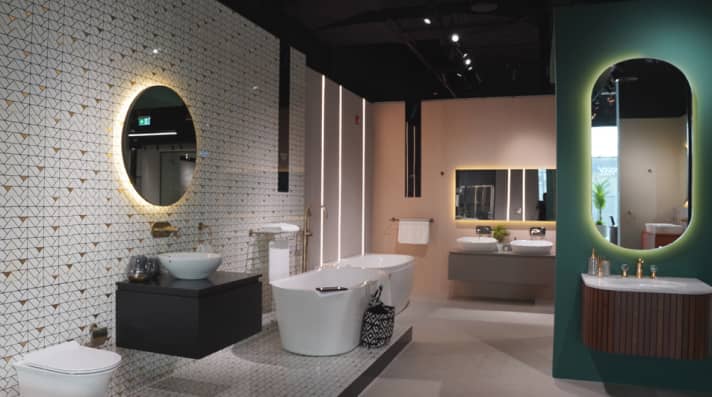

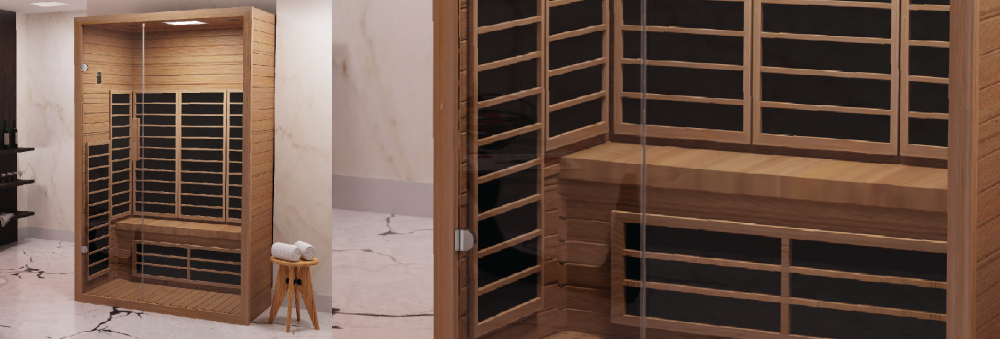
_500.jpeg)
_500.jpeg)


